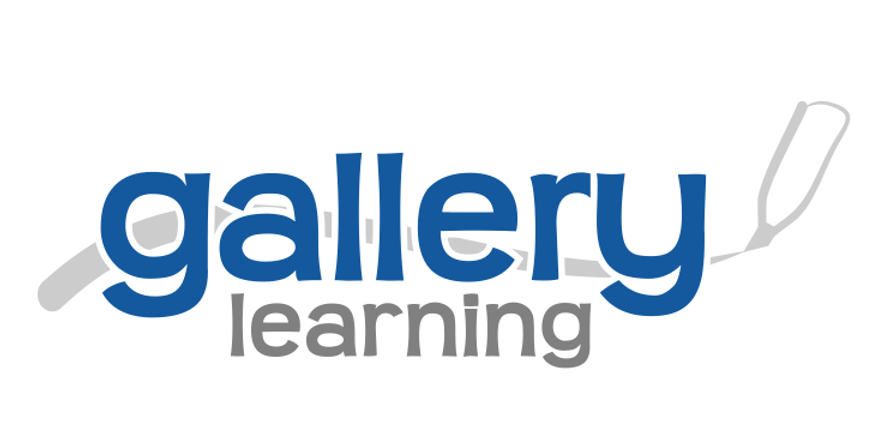
Gallery
Learning
Introduction to Gallery Learning
Engaging every single student in deep, lasting, conceptual understanding through the use of wall-mounted whiteboards where every student interacts and displays his/her thinking.
For years, my students have begged to write on the whiteboards at recess. It took me 26 years of teaching to finally channel that enthusiasm into a powerful learning method, Gallery Learning.
Gallery Learning is a student-centered, interactive teaching technique where all students produce their thoughts and thought processes on whiteboards mounted on the classroom walls. Lessons consist of a blend of spiral review, micro-lectures, hands-on experiences, whiteboard work, and social interaction. Student progress is unparalleled because of continual engagement, timely feedback, teacher input, and peer modeling. While students respond on the whiteboards mounted around the room, the teacher stands in the middle of the room and moves freely between students monitoring work and giving students feedback. Students can work independently, with a partner, or in a group. Students typically will discuss their findings or thoughts with other students. Consensus building is an integral part of the learning process. The by-product of Gallery Learning is a visual summary of the entire lesson. In addition, students are given the opportunity to expand their thought processes or to receive peer and teacher assistance if needed. This process enhances the learning experience that is recorded on the whiteboards for the entire class to see. Gallery Learning (GL) is open source learning where students can constantly learn from formative feedback.
Gallery Learning results in rapid acquisition of new skills and knowledge because it operates on the same principals as a sports team. No one hides his or her work (skills), there is constant and instant feedback and adjustments, and all the players work as a team with a coach who can see every player’s moves. Also, students learn rapidly in GL for similar reasons that they learn so quickly while playing video games: there is instant and constant feedback followed by “player” adjustments based on this feedback.
Teachers sometimes use Gallery Learning to pose simple problems (skill practice.) Whiteboards are used to recall information, or to develop a skill or concept. However, students are encouraged to dig deeper with the lesson concept. With Gallery Learning students can display their findings/thoughts, but are encouraged to show various levels of thinking such as those mentioned in the "Depth of Knowledge" (DOK) using multiple representations. Students use the whiteboards to develop and show strategic thinking and to extend their thinking by justifying their answers. GL uses consensus building to help solidify student thinking. Student thinking should also include the Depth of Knowledge (DOK) levels to further their understanding. Traditional teaching focuses on what students need to know but DOK focuses on what students need to do (notice the usage of verbs: report results, apply, analyze, synthesize, describe, design, etc.) The DOK levels are as follows:
-
Level 1 is the ability to recall information, basic facts.
-
Level 2 includes skills and concepts, and requires two or more steps.
-
Level 3 includes strategic thinking that requires reasoning.
-
Level 4 extends student thinking.
Is Gallery Learning New?
Yes and no. Gallery Learning is a combination of several good teaching strategies combined together into a different delivery system that is student-centered. It was developed by veteran teacher Tim Bedley in 2013. Gallery Learning is a blend of several good teaching concepts but delivered in a non-traditional way.
Everything Takes Longer
With traditional teaching methods, the teacher instructs the students while the students sit and listen. Often times, effective teachers will ask questions and call on individual students to answer in order to check for understanding. Traditional quality instruction will include choral response, think-pair-share, and other interactive, high-involvement techniques. These teaching methods use time efficiently since students can speak answers (which is faster than writing answers) and yet only a handful of students are involved in demonstrating their learning.
Gallery Learning works on the principle of thoroughness and depth of understanding. It takes longer than the traditional teaching model because every student is expected to demonstrate understanding throughout the lesson. Lessons obviously take longer because student listening and speaking is replaced with writing and drawing. In an effective GL lesson, the teacher will pause at every juncture and ask students to demonstrate their understanding on their whiteboards. Though more time consuming initially, the long-term results is extremely deep and thorough understanding.
Warning
You should be warned: Gallery Learning can be very frustrating. To understand why, consider this analogy. What if you had spent the last 20 years cleaning your bathrooms with the lights out and then one day, you decided to clean with the lights on? What you had previously believed to be a good job would suddenly be revealed as shoddy. Was the bathroom cleaner when the lights were out? Of course not. You just can see the grime now. When you begin using Gallery Learning, you will quickly discover that so many of your students are incapable of doing things that you assumed they could do. This can be extremely frustrating.
-
But I KNEW I was checking for understanding before!
-
What’s wrong with these kids?
-
Was I really THAT bad of a teacher before?
-
Did they learn anything in last year’s class?
Don’t panic. You’ve just turned the lights on and you’re finding all sorts of corners that need attention. Did you check for understanding before? Of course. But until you experience the “feedback on steroids” benefit of Gallery Learning, you ain’t seen nothin’!



